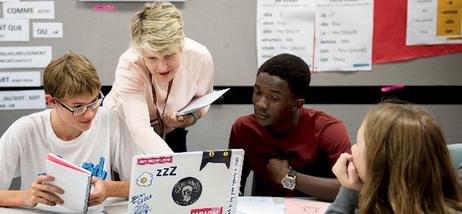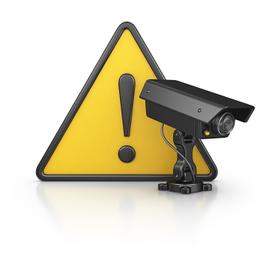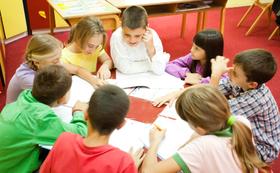The Bill and Melinda Gates Foundation recently recognized Denver ОЫОЫВю»ӯ Schools for their work on an innovative teacher evaluation system. The new system, known as LEAP, received a new $10 million grant from the foundation, which recognized three years of advancements by the school district. Denver ОЫОЫВю»ӯ Schools plans to use the money to continue improving and refining its evaluation model, which has become an example for other school districts nationwide.
Progress Rewarded
According to a press release on the DPS website, the grant was given based on the district's successful progress of the teacher evaluation initiatives. The grant is actually a renewal of an earlier $10 million grant provided by the foundation, which was used to launch the evaluation system in 2011. The system expanded to include all schools in the district by the 2012-2013 school year. The new funding will allow the program to reach full implementation throughout the school district.
вҖңWe are very appreciative of this additional investment in the important, collaborative work weвҖҷve been doing to support our teachers and to help our students achieve,вҖқ Tom Boasberg, superintendent of Denver ОЫОЫВю»ӯ Schools, stated in the press release. вҖңWe have worked closely with our teachers and our school leaders to build a system that develops and recognizes high-quality teachers, and positively impacts our schools and students.вҖқ
This video reports on the LEAP grant.
About LEAP
LEAP stands for Leading Effective Academic Practice. According to the , LEAP is not merely a system for evaluating district teachers. Instead, the system provides a framework to equip teachers to be their best in the classroom and rewards those who excel in their work. The system's primary purpose is to provide teachers with additional support and feedback so they can continue to improve their skills.
At the same time, LEAP helps the school district comply with a new state teacher effectiveness law вҖ“ Senate Bill 191. The law requires districts to use state-approved teacher evaluation systems for all teachers and principals in public schools. However, Boasberg told the that work on LEAP preceded the new law and that the system is as much about supporting teachers as finding effective ways to evaluate them.
вҖңThe purpose of this work has not been, вҖҳHow do we comply with the law?вҖҷвҖқ Boasberg explained. вҖңThe purpose of this work is, вҖҳHow do we get better support for our teachers in coaching them and helping them grow in an extraordinarily difficult profession?вҖҷвҖқ
The LEAP initiative incorporates a wide range of factors teachers and principals can use to identify areas of strength and areas where improvement needs to happen. The body of evidence includes (in order of importance and weightedness):
- Student Outcomes
- Principal Observation
- Peer Observation
- Professionalism
- Student Perception Surveys
Student outcomes include a variety of measures, such as state, district, and school measures, which encompass standardized test scores on different levels. Classroom measures are also factored into this component. To improve student outcomes, the district is focusing on two key strategies within the LEAP framework. The first is to provide sufficient feedback to teachers that meaningfully differentiates performance. The second is to create a school environment that ensures the maximum effectiveness of teachers.
Teachers are provided with end-of-year conversations that allow principals to focus on a teacherвҖҷs performance based on the body of evidence. The teacher and principal will then work together to begin to construct a Professional Growth Plan, which will identify areas of focus for the next school year. A guide has been provided to ensure the effectiveness of this conversation, both from an evaluation and improvement standpoint.
вҖңItвҖҷs like a surgeon having much greater clarity on what makes for effective procedures in complicated operating cases and then having frequent observation and feedback from expert surgeons on how theyвҖҷre doing and how they can do better,вҖҷ Boasberg explained.
This video describes how the LEAP grant will help students with career education.
Using the New Grant
Denver ОЫОЫВю»ӯ Schools has refined and modified the LEAP system since it was first introduced, according to . However, district officials agree there is still work to be done to fully implement LEAP into the school system. This makes the new grant from the foundation a welcome gift for the school district. According to the press release, the money will be used for the following:
- Aligning LEAP on a district-wide basis to Common Core Standards, paying special attention to practices that support English Language Learners
- Improvements in how LEAP data is used and ensure a greater understanding of those standards throughout the district
- Provide teachers and principals with the resources necessary to support teacher growth and provide the best possible learning environment for students
- Expanding professional development opportunities for teachers so that they can take responsibility for their own learning experience
- Certification of all classroom observers to ensure consistency throughout the evaluation process
- Developing a team of teacher leaders to add direct support to individual schools within the district
- Support for principals and assistant principals so they are equipped to provide the most constructive feedback to their staff
- Development of multiple measures of student academic growth to create more effective teacher evaluations overall
As Denver ОЫОЫВю»ӯ Schools continues to move forward with their LEAP initiative, thanks to additional funding from the Bill and Melinda Gates Foundation, the new framework is serving as a model for other school districts across the country. As the district continues to focus on teacher development and support as much as teacher evaluation, perhaps DPS has discovered a successful formula for raising education to the next level without creating a threatening environment for teachers.
Questions? Contact us on Facebook. @publicschoolreview















